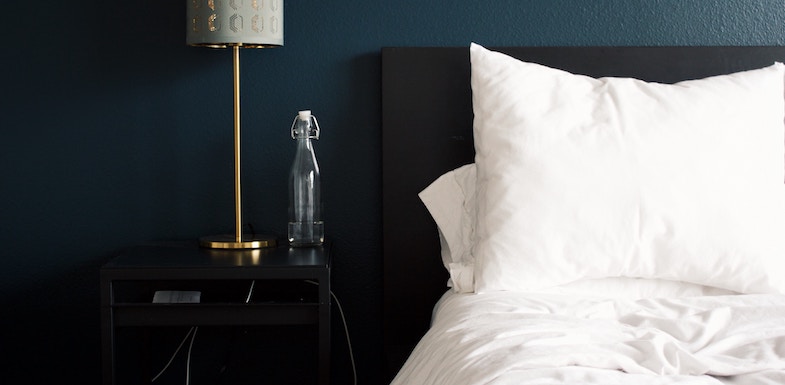Sleep apnea is arguably one of the most underdiagnosed conditions worldwide and full sleep apnea statistics worldwide are shocking. Here are 24 things you should know about this condition.
What is sleep apnea?
Falling under the larger category of sleep disordered breathing, sleep apnea comes in three forms: obstructive sleep apnea, central sleep apnea, and complex sleep apnea. Obstructive sleep apnea is most common type and occurs when a sleeper’s throat and tongue relax so much during sleep that the airway is blocked.
Central sleep apnea is a rare form of sleep apnea that occurs when the sleeper’s central nervous system essentially “forgets” to tell the sleeper to breathe. Rarer still is complex sleep apnea – a combination of both of the first two types.
A sleep apnea diagnosis is usually made with a sleep study that measures various biological changes during sleep. Additionally, the apnea-hypopnea index (AHI) measures the severity of the sleep apnea. Apneas are pauses in breathing, and hypopnea measures the times that breath is constricted. Combined, these relate to the AHI that determine the level of severity.
- 5 to 15 is mild sleep apnea
- 15 to 30 is moderate sleep apnea
- 30+ is severe sleep apnea
Sleep apnea statistics
Even if you don’t have a diagnosis, sleep apnea statistics show that there is a good chance you or someone you love has sleep apnea. Here’s what else you should know.
1. New worldwide sleep apnea statistics are shocking
A 2018 study estimated that one billion people across the globe suffer from sleep apnea (a huge leap from previous estimates of 100 million).
2. Under diagnosis is a serious problem
Studies suggest 80% of sleep issues are a result of undiagnosed sleep apnea.
3. Children are also at risk for sleep apnea
In the U.S., up to 4% of children between the ages of two and eight may have sleep apnea.
4. Getting older makes us more vulnerable
As we age, the risk of sleep apnea doubles for men and triples for women.
5. In the past, men seemed to be more at risk
Men receive a sleep apnea diagnosis at twice the rate of women.
6. However, women are more at-risk than previously thought.
As many as 50% of women could have some level of sleep apnea.
7. Hormonal changes contribute to risk
Post-menopausal women have the same level of risk as men.
8. Both genders share a primary risk factor
For both genders and all ages, obesity is a risk factor in 60% of all diagnosed cases of sleep apnea.
9. Obesity increases severity of sleep apnea
In all genders, a 10% increase in body-mass index results in a six-fold increased risk of a mild case of sleep apnea progressing to more severe cases.
10. Overweight men are more at risk
Overweight men have five times the risk of developing sleep apnea than overweight women.
11. Depression is linked to sleep apnea
A study in 2017 found that 50% of depressed patients had severe sleep apnea (mostly undiagnosed) and the majority of them had some level of sleep apnea.
12. Sleep apnea and heart disease are linked
An estimated 47 to 83% of people with heart disease also have sleep apnea.
13. AFIB and sleep apnea occur bidirectionally
In an unanswered chicken-and-egg question, AFIB and sleep apnea each make the other condition worse.
14. The stress of sleep apnea affects blood pressure, 24/7
Oxidative stress that occurs during a sleep apnea-filled night increases the chances of hypertension.
15. Untreated sleep apnea increases the chances of death
While it is true that we will all someday die, untreated sleep apnea triples the risk of premature death from any cause.
16. Severe sleep apnea can kill you
Nearly double the number of people with severe sleep apnea died of heart failure when compared to those without it (42% compared to 25%).
17. The longer you have sleep apnea, the more dangerous it is
A Yale study found that your risk of heart attack increases by 30% for every four or five years that you have sleep apnea.
18. And it’s not only about your heart
Those who suffer from sleep apnea are two or three times more likely to have a stroke.
19. Type 2 diabetes patients are at increased risk
Up to 83% of Type 2 diabetics suffer from undiagnosed sleep apnea.
20. In the U.S., diagnosed cases of sleep apnea rival other common conditions
Sleep apnea is diagnosed at about the same rate as asthma (20 million) and diabetes (24 million).
21. People with untreated sleep apnea are a risk to others
Even those with mild sleep apnea are at twice the risk of traffic accidents (and moderate to severe sleep apnea carries a fifteen-fold risk).
22. CPAP can save your life – if you use it
Compliance with CPAP use is a big problem, with nearly half of all patients not starting or abandoning treatment within four weeks.
23. CPAP is not the only answer
For non-compliant patients, sleep apnea dental devices are just as effective as CPAP machines in mild to moderate cases of sleep apnea.
24. Even undiagnosed sleep apnea is expensive
In the two years before their diagnosis, sleep apnea patients can cost an average of $200,000 more than other people without sleep apnea.
These sleep apnea statistics may paint a grim picture, but sleep apnea is treatable. In addition to lifestyle changes that include weight loss and healthy diet and exercise, CPAP machines and sleep apnea dental devices could save your life.
For more questions about sleep apnea and to evaluate your risk factors, get in touch with the sleep apnea dentists at AZ Dentist.

Leave A Comment